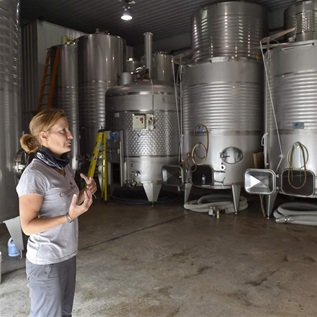Retirement Plans
Part of a better financial future in Pennsylvania
Retirement income from a variety of sources—including Social Security, personal savings, and employer-sponsored savings plans—ensures a sound financial future. But for many Americans, a part of this puzzle is missing. More than a third of all private sector workers lack access to a workplace plan—and 31 percent of those whose employers do offer retirement benefits don’t participate.
Workers without access to a workplace retirement plan could have other retirement savings, such as an individual retirement account or a plan from a prior employer. But research from The Pew Charitable Trusts shows that just 27 percent of those without access to a plan say they have any retirement savings.
Pennsylvania is generally ahead of these national trends; for instance, when given a chance, 86 percent of Pennsylvanians participate in a workplace retirement plan. But as many as 1 million full-time, full-year private sector workers in the commonwealth lack access to a workplace retirement plan—a number that swells if part-time workers and independent contractors are included. And, like the nation as a whole, access to a plan is particularly low in Pennsylvania for workers at small firms; for low-to-moderate wage employees; for Hispanics; and for those who are younger, among others. Small firms say they want to help their workers save for retirement, but many business owners say they cannot afford the costs of starting a plan or don’t have the administrative capacity to run a plan.
Employees would welcome the help. Only 38 percent of Pennsylvanians have tried to figure out how much they need to save for retirement—and just 23 percent are satisfied with their current personal financial condition when thinking of their assets, debts, and savings, according to the Financial Industry Regulatory Authority’s FINRA Investor Education Foundation.
The problem has not gone unnoticed. State Treasurer Joe Torsella convened a task force, with bipartisan participation from the Pennsylvania Legislature, business, and labor, to assess retirement security in the commonwealth.
As the task force pursues its work, new research shows that saving for retirement provides many benefits. A report from Pew based on a survey of private sector workers, “Workplace Retirement Plans Tend to Sharpen Focus on Financial Futures,” finds a clear connection between retirement plan participation and financial planning. Like the FINRA data, Pew’s research indicates that few workers nationwide have tried in the past two years to figure out how much income they would need in retirement. The good news is that those currently participating in an employer-sponsored plan—or have ever participated in such a plan—are more likely to have engaged in retirement planning than those who are not, or have not been, plan participants. Participation in an employer-sponsored plan may make workers more cognizant of the need to plan—or give them more opportunities to do so.
What’s more, the report suggests that workers who have participated in employer-sponsored plans have access to better planning resources, and use more rigorous tools to determine their retirement income needs, than those who have not participated in such a plan. Guesstimating—informal or so-called “back of the envelope” calculations—is common among both groups, but more so for workers without access to a workplace plan (43 percent) than those with access (31 percent). Using a more formal tool than the back of an envelope can be a reality check for workers who may be overconfident in their savings, thus prodding them to better prepare for retirement.
The bottom line? Policies that encourage greater access to, and participation in, employer-based plans appear to be a critical pathway to retirement security—not just by building assets but also by helping individuals plan for a brighter financial future.
John Scott is director of The Pew Charitable Trusts’ retirement savings project.
This piece originally ran in the Harrisburg Patriot-News on February 12, 2018.












